QuestionQUESTION: Hi, i have a 4 month old sulcata and he(she)'s shell is getting soft and its appetite is decreasing. Today I could barely get it to get its eyes open and it didn't walk around that much. I am really concerned that i am going to end up with a dead tortoise. I have tried to find a vet but there isn't one near me and the pet store I bought it from is kinda ignoring me and not really helping. If you could help me it would be very much appreciated.
Thank you Tyler.
ANSWER: Hi Tyler,
If you got your tortoise at a pet store, they probably gave you incorrect care information. Here's the basics you need to know (this is for hatchling care):
1) NO TANKS. You need something open and roomy. For now, a big Rubbermaid tub or a cement mixing bin (from Lowe's) will do, but keep in mind that sulcata grow fast and very large. Sooner than you think, you'll need a large outdoor pen with heated shed, so plan ahead.
2) Substrate should be a 50/50 mix of coir (bed-a-beast/ecoearth) and playsand. Keep it slightly damp. This is very important, because hatchlings dehydrate quickly. The dampness replicates the moisture they would get from underground burrows in the wild.
3) Basking temperature should be 90-95 degrees, with a cooler area of 70-75 degrees. Measure this at the substrate level under the basking lamp, not air temperature. You also need a good source of UVB. Get a ZooMed Powersun bulb (100 watt). It gives good heat and UVB. Many of the bulbs on the market that claim to give off UVB are actually very poor. See http://russiantortoise.org/uvb.htm.
4) A dish of water big enough for him to get into completely should be available at all times. Also put in a cuttlebone so that he can self-regulate calcium intake.
5) Diet for a sulcata should be mostly grass/hay with leafy greens. No fruit, veggies, or pellets. A hatchling probably won't eat much hay or grass, but you can chop some into small bits and mix it with his greens to get him started on it. Oxbow sells orchard grass hay, which is very soft and much better than timothy hay. Good greens are turnip, collards, mustard, dandelion, kale, and weeds like clover, chicory, chickweed, mallow, sow thistle, hawkbit, etc. Hibiscus flowers, mulberry leaves, violas, nasturtiums, etc. are also good. Spring mix is OK as part of a varied diet, but don't overdo the lettuces because they're lower in nutrition and fiber. Good diet is really important.
The soft shell is most likely due to poor diet and/or lack of UVB. If you make the corrections noted above, you should be able to turn him around if it's not too late, but don't wait.
A good site for care information is www.africantortoise.com. Post back if you have any questions and I'll do my best to help.
---------- FOLLOW-UP ----------
QUESTION: Thank you for replying! Well i have a L 25" by W 13" cage that is metal, with paper towels on the bottom. I feed it lettuce so i will have to change that to alfalfa or orchard grass hay. I have a repti-glo exo-terra 10.0 UVB fixture and a 100 w heat lamp. Also I have a moist place in its hide and a water bowl. Thanks again!
AnswerHi Tyler,
I would find another enclosure for him, especially if the cage is galvanized metal. 25 x 13 is very small, even for a hatchling. An underbed storage box would work, or anything a little bigger you might have around. Also get rid of the paper towels. They don't hold any humidity, and you really need to boost the moisture level to prevent dehydration. A humid hide will help, but having a damp substrate is better. The coir/sand substrate will also allow him to dig, and provides a good footing for walking and building leg muscles.
The Repti-glo gives off very little to no UVB. I'd highly recommend switching to the Powersun. It sounds like your tortoise is in serious need of UVB, so change the bulb as soon as you can. When the weather warms up, getting him outside for a few hours a day will be very beneficial.
Alfalfa hay is higher in protein, so don't feed that. Start with good greens and get him eating well first, then gradually add chopped, moistened hay. It can take a little time to get them eating hay, but as long as he's eating good greens it's fine if he doesn't eat too much hay at first. Good luck!

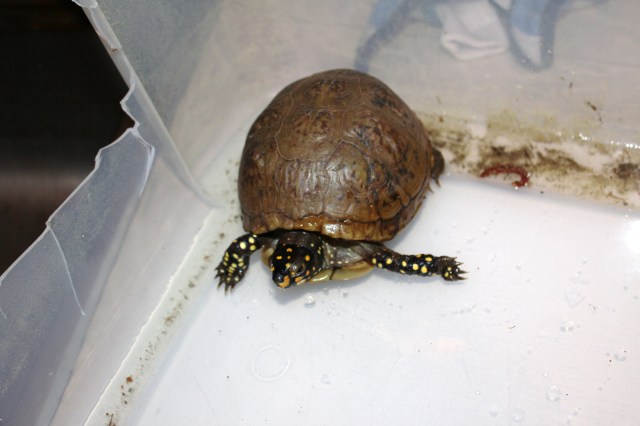 Help identifying a turtle
Question
Turtle
I need help identifying this turtle I f
Help identifying a turtle
Question
Turtle
I need help identifying this turtle I f
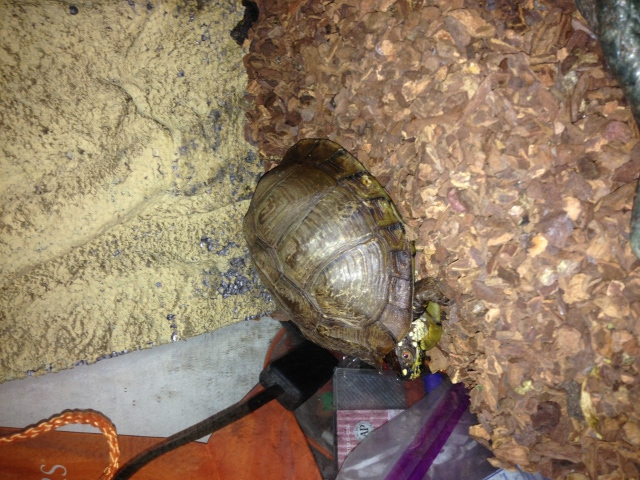 Turtle food
QuestionQUESTION: I have had my turtle for 5-7 years wh
Turtle food
QuestionQUESTION: I have had my turtle for 5-7 years wh
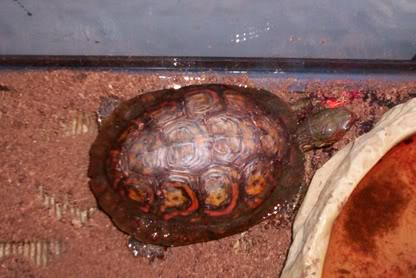 land/box turtle
QuestionQUESTION: My turtle has been getting an algae-l
land/box turtle
QuestionQUESTION: My turtle has been getting an algae-l
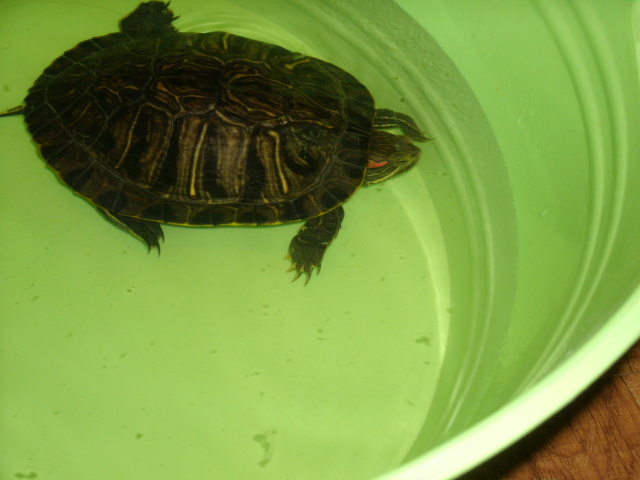 What type of turtle is this?
Question
Turtle1
I came home from work and to my surpri
What type of turtle is this?
Question
Turtle1
I came home from work and to my surpri
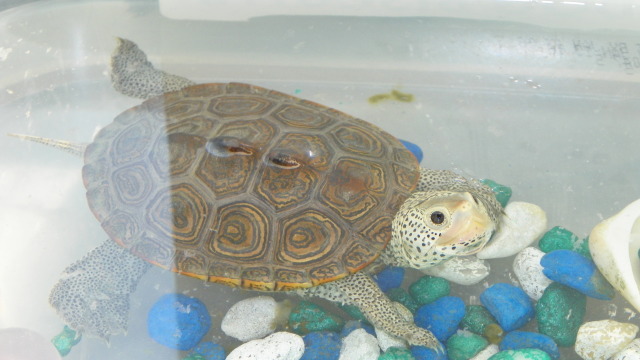 What species of turtle is this?
QuestionOur turtle
QUESTION: We found this littl
What species of turtle is this?
QuestionOur turtle
QUESTION: We found this littl